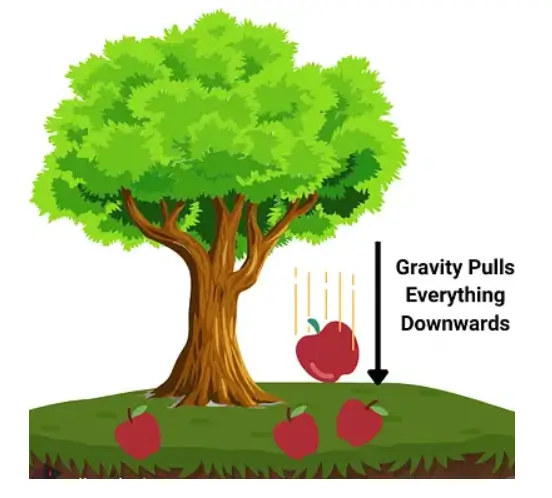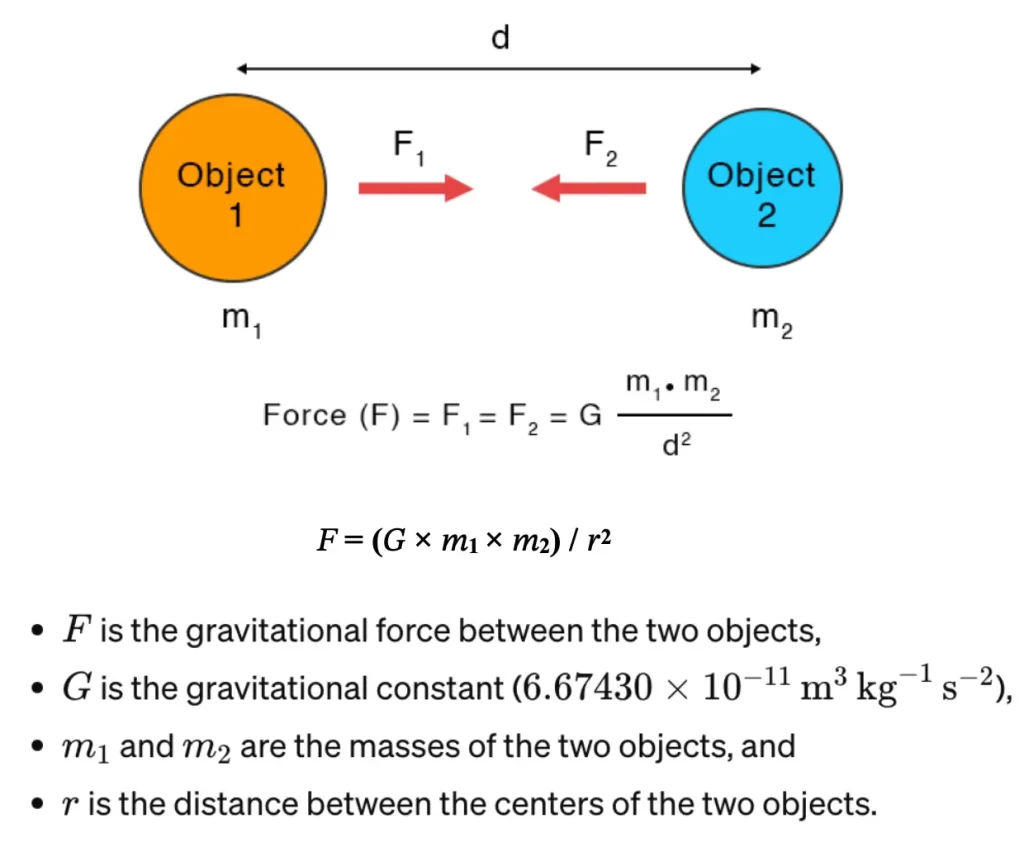Gravity, one of the four fundamental forces in nature, governs the motion of objects on Earth and throughout the universe. From the falling of an apple to the orbits of planets around stars, gravity’s influence is ubiquitous and profound. In this article, we delve into the definition, units, formulas, examples, and applications of gravity in the realm of physics.

Definition of Gravity:
Gravity is the force of attraction that exists between any two masses in the universe. This force is directly proportional to the product of the masses of the two objects and inversely proportional to the square of the distance between their centres. According to Newton’s law of universal gravitation, every particle in the universe attracts every other particle with a force that is directly proportional to the product of their masses and inversely proportional to the square of the distance between their centres.
Units of Gravity:
In the International System of Units (SI), the unit of force is the newton (N). Therefore, the unit of gravitational force is also the newton (N). In other systems of measurement, such as the Imperial system, the unit of force is the pound-force (lbf).
Formula for Gravity:
The force of gravity between two objects can be calculated using Newton’s law of universal gravitation:

Examples of Gravity:

- Falling Objects: When an object is dropped from a certain height, it falls towards the Earth due to the gravitational force exerted by the Earth.
- Planetary Orbits: The gravitational force between a planet and a star, such as the Sun, keeps the planet in orbit around the star.
- Tides: The gravitational pull of the Moon and the Sun on the Earth’s oceans causes the phenomenon of tides.
- Weight: The weight of an object is the force exerted on it due to gravity. An object’s weight is equal to the mass of the object multiplied by the acceleration due to gravity (W=m×g).
Applications of Gravity in Physics:
- Astrophysics: Gravity plays a central role in understanding the structure, dynamics, and evolution of celestial bodies such as stars, planets, galaxies, and black holes.
- Mechanics: Gravity is a crucial factor in classical mechanics, influencing the motion of objects, the trajectory of projectiles, and the behaviour of mechanical systems.
- Geophysics: Gravity is used in geophysics to study the Earth’s interior, map subsurface features, and detect variations in density.
- Space Exploration: Understanding gravity is essential for the design and operation of spacecraft, as gravitational forces affect spacecraft trajectories, orbits, and missions.
- Gravitational Waves: The study of gravitational waves, ripples in spacetime caused by the acceleration of massive objects, provides insights into the nature of gravity and the universe itself.
Conclusion:
In conclusion, gravity is a fundamental force of nature that governs the behaviour of objects on Earth and in the cosmos. Its effects are widespread and crucial for understanding the dynamics of the universe, from the motion of planets to the structure of galaxies. By unraveling the mysteries of gravity, physicists continue to deepen our understanding of the fundamental laws that govern the universe.




